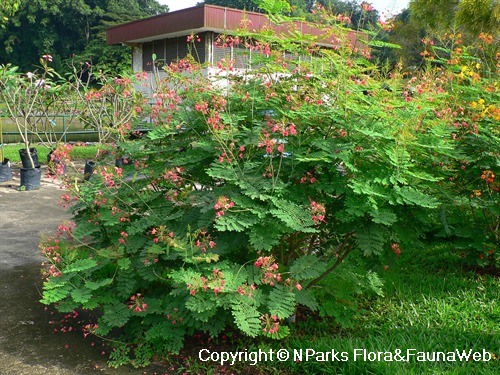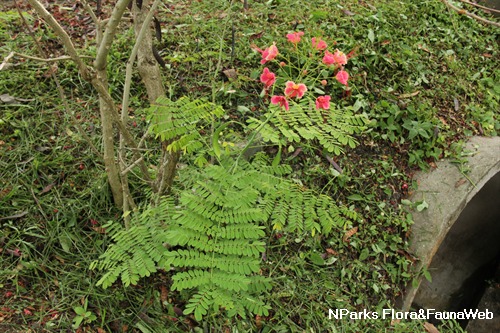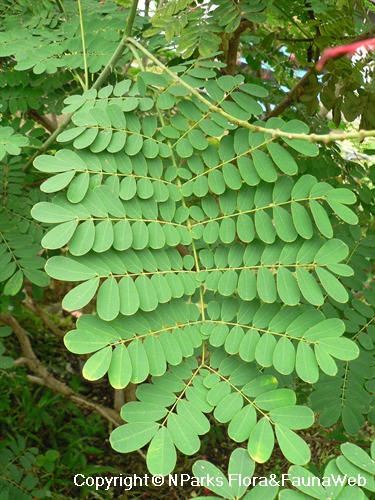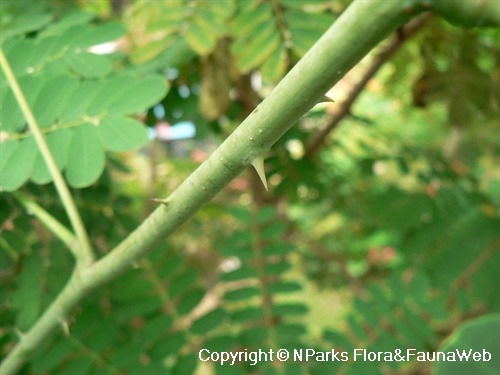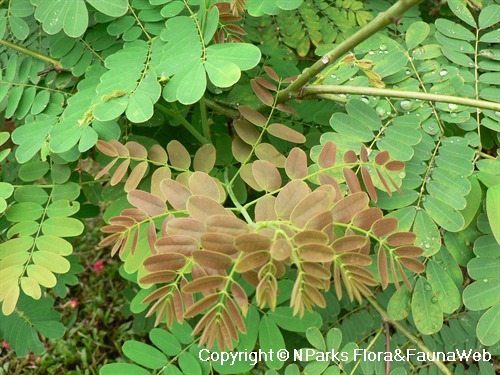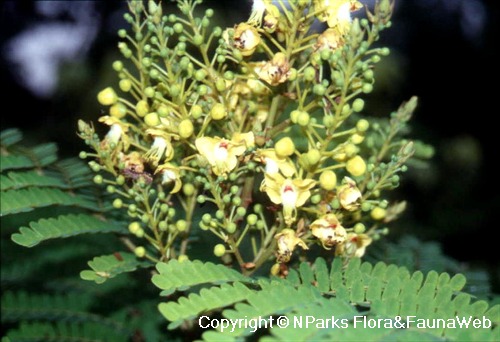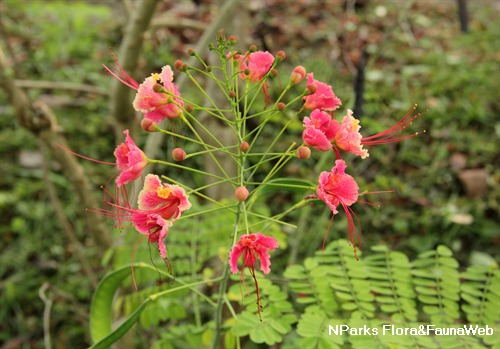
Back
Caesalpinia pulcherrima (L.) Sw. f. rosea
| Family Name: | Fabaceae (Leguminosae) |
| Common Name: | Dwarf Poinciana, Pride of Barbados |
Name
Classifications and Characteristics
| Plant Division | Angiosperms (Flowering Seed Plants) (Dicotyledon) |
|---|---|
| Plant Growth Form | Shrub |
| Lifespan (in Singapore) | Perennial |
Biogeography
| Native Habitat | Terrestrial |
|---|---|
| Preferred Climate Zone | Tropical, Sub-Tropical / Monsoonal |
Description and Ethnobotany
| Growth Form | Shrub or miniature tree with wide open crown, fast-growing and evergreen. |
|---|---|
| Foliage | Bipinnate and fernlike. |
| Stems | Green, turning grayish-brown as the stems become woodier, covered with spines, which swell at the base as the stems mature. |
| Flowers | Pinkish-red, scentless with long stamens and pistil. There is one modified petal which is smaller than the other 4 petals. |
| Fruit | Oblong pod, thin, up to 10 cm long. Pods split to disperse the single row of flattened seeds. |
| Etymology | Genus epithet 'Caesalpinia' honours the Italian physician, philosopher and botanist, Andrea Caesalpino, and species epithet 'pulcherrima' means 'most beautiful', referring to the flowers. |
| Ethnobotanical Uses | Medicinal: The Indonesians pound the roots and give it to children afflicted with convulsions. The bark is used to treat diarrhea. The flowers are claimed to be effective against intestinal worms. The leaves are believed to have purgative properties and used to induce abortion. The west Indians pound the flowers and leaves into a decoction to treat fever. |
Landscaping Features
| Desirable Plant Features | Ornamental Flowers |
|---|---|
| Landscape Uses | Suitable for Roadsides, Parks & Gardens, Small Gardens |
Fauna, Pollination and Dispersal
| Fauna Pollination Dispersal Associated Fauna | Butterfly Host Plant, Bee-Attracting |
|---|
Plant Care and Propagation
| Light Preference | Full Sun |
|---|---|
| Water Preference | Moderate Water |
| Rootzone Tolerance | Moist Soils, Well-Drained Soils |
Foliar
| Mature Foliage Colour(s) | Green |
|---|---|
| Leaf Area Index (LAI) for Green Plot Ratio | 4.5 (Shrub & Groundcover - Dicot) |
Floral (Angiosperm)
| Flower Colour(s) | Red, Pink |
|---|
Image Repository
Others
| Master ID | 446 |
|---|---|
| Species ID | 5115 |
| Flora Disclaimer | The information in this website has been compiled from reliable sources, such as reference works on medicinal plants. It is not a substitute for medical advice or treatment and NParks does not purport to provide any medical advice. Readers should always consult his/her physician before using or consuming a plant for medicinal purposes. |

